#LDPE
Explore tagged Tumblr posts
Text
Top 10 Uses of HDPE and LDPE Tarpaulins in Modern Industry
Introduction to HDPE and LDPE Tarpaulins
HDPE (High-Density Polyethylene) and LDPE (Low-Density Polyethylene) tarpaulins are the unsung heroes of many industries, offering durability, flexibility, and weather resistance for countless applications.
Why Tarpaulins Are Essential in Modern Industry
Tarpaulins protect assets, improve efficiency, and reduce losses from weather or dust, making them a must-have in agriculture, construction, logistics, and more.

Top 10 Industrial Uses of HDPE and LDPE Tarpaulins
Agricultural Protection: Shield crops, hay, and fertilizers from rain and UV rays.
Construction Site Coverings: Cover scaffolding, building materials, and unfinished structures.
Transportation and Truck Covers: Secure and protect goods during transit.
Warehouse and Storage Solutions: Create temporary storage or partition spaces.
Industrial Packaging: Wrap machinery or bulk goods for safe storage and shipping.
Pond and Canal Linings: Prevent water seepage in irrigation and aquaculture.
Event and Temporary Shelter: Set up tents, canopies, or emergency shelters.
Machinery and Equipment Protection: Guard against dust, rain, and sunlight.
Disaster Relief and Emergency Use: Provide quick shelter and coverage during crises.
Sports Ground Covers: Protect fields from rain and maintain playability.
Advantages of Using HDPE and LDPE Tarpaulins
They’re lightweight, waterproof, UV-resistant, and cost-effective, making them ideal for repeated use in tough environments.
Choosing the Right Tarpaulin for Your Industry
Consider thickness, size, and material (HDPE for strength, LDPE for flexibility) to match your specific needs.
Conclusion
HDPE and LDPE tarpaulins are versatile, affordable, and indispensable across modern industries. For premium tarpaulins, visit Cloudland Impex or contact +91-9998850639, +91-9998850693, [email protected].
FAQs
What’s the main difference between HDPE and LDPE tarpaulins?
Are these tarpaulins suitable for long-term outdoor use?
Can I use tarpaulins for food storage?
How do I maintain and clean industrial tarpaulins?
Where can I order custom-sized tarpaulins for my business?
0 notes
Video
youtube
Plastic Film Recycling Pelletizing Line: Ideal to Process PP, PE, LDPE, ...
📞WhatsApp/Tel/Wechat: +86 17303831295 📧Our Website: https://recyclingequipinc.com/product/plastic-film-recycling-machine/ 🌐Email: [email protected]
0 notes
Text
Sustainable Solutions in Plastic Scrap – PVC & LDPE Rolls and Sheets with Four Seasons FZE
At Four Seasons FZE, we are dedicated to providing businesses with top-tier plastic scrap solutions, focusing on sustainability and efficiency. Our comprehensive range includes PVC White and Clear Rolls-Trims (Rigid), PVC Rigid Rolls-Sheets for the décor industry, PVC Rigid and Flexible Scrap, and LDPE Rolls-Sheets in natural, white, and printed forms. These materials are ideal for companies looking to reduce waste and promote eco-friendly practices while maintaining high product standards.
PVC White and Clear Rolls-Trims (Rigid) Our PVC White and Clear Rolls-Trims are valued for their strength and clarity. Perfect for various industrial applications, these rigid materials provide reliable performance in protective and decorative roles, making them an essential choice for industries ranging from construction to packaging.
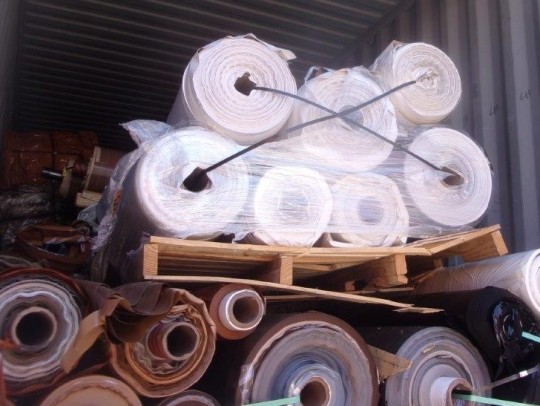
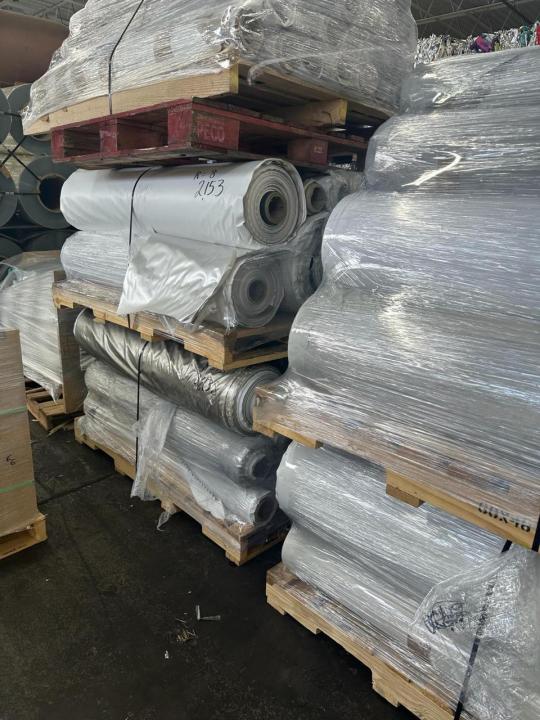
PVC Rigid Rolls-Sheets for the Décor Industry For businesses in the décor industry, our PVC Rigid Rolls-Sheets offer a blend of style and durability. These sheets come in a variety of finishes and thicknesses, which are ideal for enhancing the aesthetic appeal of interiors while ensuring long-term performance. They are perfect for applications such as wall panels and furniture laminates.
PVC Rigid and Flexible Scrap We provide high-quality PVC Rigid and Flexible Scrap, which is an excellent option for manufacturers aiming to incorporate sustainable materials into their production processes. Our meticulously processed scraps ensure quality and consistency, helping businesses lower costs while reducing their environmental footprint.
LDPE Rolls-Sheets: Natural, White, and Printed Our LDPE Rolls-Sheets come in natural, white, and printed options, offering flexibility and toughness for various applications. These sheets are widely used in packaging, agricultural films, and more, providing a reliable and eco-friendly choice for industries looking to enhance their sustainability initiatives.
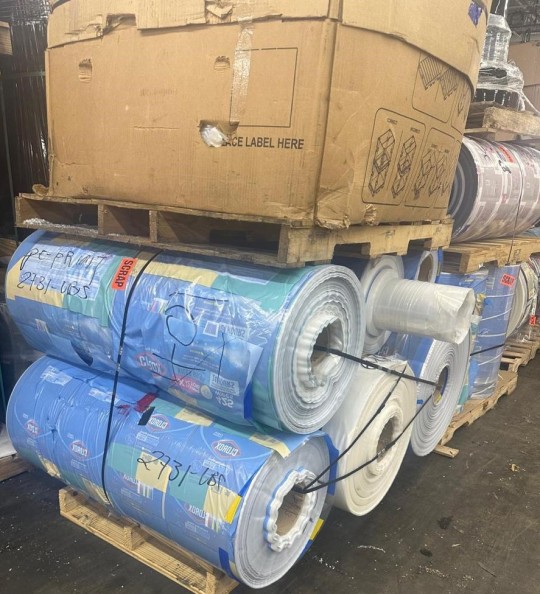
Why Choose Four Seasons FZE? Industry Expertise: With extensive experience in waste management, we offer high-quality, reliable materials that meet the demands of various industries. Commitment to Sustainability: We prioritize environmental responsibility, providing recycled materials that help businesses achieve their sustainability goals. Global Reach and Reliability: Our well-established network ensures consistent supply and timely delivery, no matter where you are. Customer-Centric Approach: We work closely with our clients to understand their needs and deliver customized solutions that add value to their operations. Contact Us Today Partner with Four Seasons FZE for all your plastic scrap needs. Our wide range of materials and commitment to sustainability make us the ideal choice for businesses looking to innovate and grow responsibly. Reach out to us to learn more about how our products can support your sustainability journey. Together, we can create a more sustainable future.
#FourSeasonsFZE#PlasticScrap#WasteManagement#Sustainability#PVCRolls#PVCTrims#PVCSheets#LDPE#RecycledMaterials#EcoFriendly#CircularEconomy#PVCRecycling#LDPERecycling#IndustrialSolutions#PlasticRecycling#GreenBusiness#SustainableIndustry
0 notes
Text
Dee Five Shrink Insulations Pvt. Ltd.: Your Trusted Partner for LDPE and Polyolefin Shrink Films
When it comes to choosing the right packaging solution for your business, shrink films stand out as a versatile and reliable option. At Dee Five Shrink Insulations Pvt. Ltd., we take pride in being the Best LDPE Shrink Film Supplier and Best Polyolefin Shrink Film Supplier in the industry. Our commitment to providing high-quality products, tailored packaging solutions, and unmatched customer service makes us a leader in the market.
Why Choosing the LDPE Shrink Film Supplier
The success of your product can be greatly impacted by the materials you select in the quick-paced world of packaging. Low-density polyethylene (LDPE) shrink film has become a popular option for companies trying to guarantee the presentation and safety of their products. But how can you find the best LDPE shrink film supplier for your requirements when there are so many of them?
Understanding LDPE Shrink Film
A flexible packaging material known for its resilience and versatility is LDPE shrink film. When heated, this kind of film shrinks, encircling goods firmly and shielding them from environmental factors including moisture, dust, and physical harm. Typical uses consist of:
• Food Packaging: Keeps food items fresh and prevents contamination. • Retail Products: Enhances product appearance while providing tamper-evident seals. • Industrial Uses: Secures items for transport, reducing the risk of damage. The Advantages of Polyolefin Shrink Films
Conversely, polyolefin shrink films provide a harmony between durability and style. Because of these films' renowned clarity, your items will be able to shine through the packaging. Polyolefin films are not only aesthetically pleasing but also extremely strong, making them impervious to tears and punctures. They are perfect for packaging food items because they have FDA approval.
The dependability and consistency of our products are the foundation of our standing as the Best Polyolefin Shrink Film Supplier. Shrink films from Dee Five Shrink Insulations Pvt. Ltd. help your brand leave a lasting impression on consumers by protecting your products and improving their appearance.
Why Dee Five Shrink Insulations Pvt. Ltd.?
1. Quality Assurance: We make both LDPE and polyolefin shrink films using premium raw materials, guaranteeing that each roll satisfies your unique packaging requirements.
Customization: Our staff carefully collaborates with customers to comprehend their needs and offer solutions that are specifically designed to meet their corporate objectives.
Eco-Friendly Options: Our activities are centered on sustainability. We provide environmentally friendly shrink film choices that reduce their negative effects on the environment without sacrificing functionality.
Competitive Pricing: We provide high-quality shrink films at cost-effective prices, making us the preferred choice for businesses of all sizes.
Exceptional Customer Service: Our dedicated customer support team is always available to help you choose the right product and answer any questions you may have.
Industries We Serve
As a trusted supplier of LDPE and polyolefin shrink films, Dee Five Shrink Insulations Pvt. Ltd. caters to a diverse range of industries: • Food and Beverage: Our films provide a safe and hygienic packaging solution for perishable items. • Pharmaceuticals: Ensure the integrity and safety of medical products with our durable shrink films. • Electronics: Our shrink films offer reliable protection for sensitive electronic goods. • Retail: Enhance product visibility and improve shelf appeal with our high-clarity shrink films. Conclusion
Dee Five Shrink Insulations Pvt. Ltd. is the ideal partner for companies seeking superior packaging solutions. We are known as the Best LDPE Shrink Film Supplier and the Best Polyolefin Shrink Film Supplier because of our wide selection of shrink films, dedication to quality, and customer-focused strategy. Allow us to assist you in raising the bar for packing and guaranteeing that your goods are safe and secure from the point of manufacture to the point of sale.
To discuss your packaging requirements and learn more about our extensive selection of shrink film solutions customized for your sector, get in touch with us right now.
0 notes
Text
0 notes
Text
Low Density Polyethylene (LDPE) Prices | Pricing | Trend | News | Database | Chart | Forecast
Low-density polyethylene (LDPE) Prices is a versatile polymer used extensively in various industries, ranging from packaging to agriculture. As a key material in the production of plastic films, containers, and coatings, LDPE is in high demand globally. Understanding the dynamics of LDPE prices is crucial for businesses that rely on this material, as fluctuations in prices can significantly impact production costs and profitability. Over the years, LDPE prices have been influenced by several factors, including raw material costs, supply and demand balances, geopolitical events, and technological advancements in production processes.
The primary raw material for LDPE is ethylene, a hydrocarbon derived from natural gas or crude oil. The cost of ethylene is directly tied to the price of crude oil and natural gas, which are subject to volatile swings due to global economic conditions, political instability in key producing regions, and fluctuations in supply and demand. When the prices of crude oil or natural gas rise, the cost of producing ethylene increases, which in turn drives up the prices of LDPE. Conversely, when crude oil and natural gas prices fall, the production costs for ethylene decrease, often leading to lower LDPE prices. However, this relationship is not always linear, as other factors can also play a significant role in determining LDPE prices.
Get Real Time Prices for LDPE: https://www.chemanalyst.com/Pricing-data/low-density-polyethylene-ldpe-24
Supply and demand dynamics are another critical factor influencing LDPE prices. The demand for LDPE is driven by its widespread use in the packaging industry, where it is used to manufacture plastic bags, food containers, and films. It is also used in the agricultural sector for making greenhouse films and irrigation pipes. As economies grow and consumer demand for packaged goods increases, the demand for LDPE rises, potentially leading to higher prices if supply does not keep pace. On the supply side, the production capacity of LDPE plants, along with their operational efficiency, affects the availability of LDPE in the market. When production capacity is constrained due to maintenance shutdowns, technical issues, or delays in new plant startups, the supply of LDPE may become tight, leading to price increases. Conversely, when there is an oversupply of LDPE due to increased production capacity or reduced demand, prices may decline.
Geopolitical events and regulatory changes can also have a significant impact on LDPE prices. For instance, trade tensions between major economies, such as the United States and China, can disrupt the global supply chain for ethylene and LDPE, leading to price volatility. Similarly, changes in environmental regulations aimed at reducing plastic waste can affect the demand for LDPE, as manufacturers may seek alternative materials or technologies to comply with new standards. Additionally, tariffs or import restrictions imposed by governments can alter the competitive landscape, influencing both the supply and demand of LDPE and ultimately affecting prices.
Technological advancements in the production of LDPE have the potential to lower costs and stabilize prices. Innovations in catalyst technology, process optimization, and energy efficiency have allowed manufacturers to produce LDPE more efficiently and at lower costs. These advancements can offset some of the cost pressures from rising raw material prices or supply constraints. However, the adoption of new technologies can also lead to temporary disruptions in supply as plants undergo upgrades or modifications, which can impact prices in the short term.
The global market for LDPE is highly interconnected, with prices in one region often influencing those in another. For example, a supply shortage in Asia due to a plant outage can lead to higher LDPE prices in Europe and North America as buyers compete for available material. Similarly, an oversupply in one region can lead to price reductions globally as producers seek to offload excess inventory. Currency exchange rates also play a role in shaping LDPE prices, particularly in countries that import a significant portion of their LDPE needs. A weaker local currency can make imports more expensive, driving up domestic LDPE prices, while a stronger currency can have the opposite effect.
Recycling initiatives and sustainability efforts are increasingly influencing the LDPE market. As more companies and governments commit to reducing plastic waste, the demand for recycled LDPE is growing. This shift is creating a dual market for virgin and recycled LDPE, with prices for each being influenced by different factors. The cost of collecting, sorting, and processing post-consumer plastic waste affects the price of recycled LDPE, while the demand for eco-friendly products can lead to price premiums for recycled material. Additionally, the availability of recycled LDPE can impact the prices of virgin LDPE, as manufacturers may reduce their reliance on virgin material in favor of recycled alternatives.
In conclusion, LDPE prices are shaped by a complex interplay of factors, including raw material costs, supply and demand dynamics, geopolitical events, technological advancements, and sustainability trends. Businesses that rely on LDPE must closely monitor these factors to anticipate price movements and make informed decisions. While the market is inherently volatile, understanding the underlying drivers of LDPE prices can help businesses manage risks and capitalize on opportunities in this essential material market.
Get Real Time Prices for Low-density polyethylene (LDPE): https://www.chemanalyst.com/Pricing-data/low-density-polyethylene-ldpe-24
Contact Us:
ChemAnalyst
GmbH - S-01, 2.floor, Subbelrather Straße,
15a Cologne, 50823, Germany
Call: +49-221-6505-8833
Email: [email protected]
Website: https://www.chemanalyst.com
#LDPE#LDPE Price#LDPE Price Monitor#LDPE Pricing#Low Density Polyethylene#Low Density Polyethylene Price#Low Density Polyethylene Prices
0 notes
Text
instagram
0 notes
Text
Trash Bag Market Analysis: Trends, Innovations, and 2024 Forecast Study
Trash Bag Market: Revolutionizing Waste Management Solutions
The Trash Bag Market is an integral component of waste management systems globally, providing essential solutions for containing and disposing of solid waste efficiently. A trash bag, also known as a bin liner or garbage bag, serves the primary purpose of preventing spills and leaks of both solid and liquid waste. These bags are commonly used to line the inside of trash bins, ensuring that waste materials do not adhere to the bin's interior surfaces, thus facilitating convenient and hygienic cleanup processes.
As of recent analysis, the Global Trash Bag Market exhibited significant growth trends, with a market value projected to reach USD 13.8 billion in 2023. Further estimations suggest that the market is poised to expand substantially, reaching a value of USD 22.0 billion by 2032, at a Compound Annual Growth Rate (CAGR) of 5.3%. This growth trajectory underscores the increasing reliance on trash bags for waste management across various sectors and geographies.
Trash Bag Market Growth Analysis
Market Dynamics
Emerging Trends and Innovations
Trash bag manufacturers are keenly observing the rising demand for eco-friendly solutions, in line with the growing environmental consciousness among consumers. As a response, biodegradable materials are gaining momentum in the market, appealing to individuals and businesses prioritizing sustainability. Innovations in trash bag design include features such as antibacterial properties, odor control, and even smart technologies like freshness indicators. Furthermore, practical packaging solutions, such as easy-to-dispense boxes and space-saving designs, enhance the usability of trash bags, catering to diverse consumer needs.
VISIT For Free PDF Sample Copy@ https://dimensionmarketresearch.com/report/trash-bag-market/request-sample/
Challenges and Constraints
Despite significant growth prospects, the conventional trash bag market faces challenges stemming from shifting consumer preferences towards eco-friendly alternatives like cloth bags or composting solutions. Increasing environmental awareness and concerns regarding plastic waste contribute to this paradigm shift. Additionally, fluctuations in raw material prices, particularly polymers like polyethylene, pose challenges to profit margins and pricing strategies. Economic downturns may further dampen demand for specialty or costly trash bags, leading consumers to prioritize essential purchases. Moreover, disruptions in the global supply chain, caused by natural disasters or geopolitical events, can impact raw material availability and production processes, contributing to market volatility.
Key Takeaways
Research Scope and Analysis
By Type
The trash bag market encompasses two primary types: recyclable and non-recyclable bags. Recyclable bags dominated the market share in 2023, driven by their eco-friendly nature and ease of disposal. These bags are available in various sizes, offering versatility to consumers, along with greater durability, which reduces the risk of tearing. The growing emphasis on sustainability and convenience in waste management solutions further bolsters the demand for recyclable trash bags.
By Material
The market segmentation based on material includes Bio-Degradable Polyethylene, Low-Density Polyethylene (LDPE), Linear Low-Density Polyethylene (LLDPE), and High-Density Polyethylene (HDPE). Among these, the Low-Density Polyethylene (LDPE) segment exhibits robust growth potential, owing to its strength and resistance to punctures, making it suitable for waste containment. LDPE trash bags are also more affordable compared to other polymers, making them a popular choice, particularly in cost-sensitive regions. The broader adoption of LDPE trash bags, especially in emerging markets, further contributes to the segment's growth trajectory.
By Distribution Channel
Distribution channels for trash bags encompass Hypermarkets & Supermarkets, Convenience Stores, Online Stores, and others. Hypermarkets & supermarkets accounted for the largest market share in 2023, attributed to the wide range of cleaning and laundry products available in these retail outlets. Discounts and promotional offers provided by these establishments attract customers, making them the preferred choice for trash bag purchases.
Buy This Exclusive Report Here@ https://dimensionmarketresearch.com/checkout/trash-bag-market/
Regional Analysis
North America
North America emerged as a dominant force in the Trash Bags market, with the United States and Canada leading the region. The prevalence of disposable products, coupled with evolving waste management practices, urbanization trends, and population dynamics, influences market growth. Increasing environmental awareness among North American consumers is driving a shift towards sustainable garbage bag options, presenting competitive dynamics among key players and local manufacturers. To maintain market share, businesses focus on product quality, brand recognition, and pricing strategies, alongside corporate social responsibility efforts to enhance brand image and meet consumer expectations.
Europe
Europe comprises several key markets, including Germany, the United Kingdom, France, Italy, Russia, Spain, Benelux, Nordic countries, and others. The region demonstrates a growing inclination towards eco-friendly waste management solutions, fostering demand for recyclable trash bags and biodegradable materials. Competitive landscapes vary across European countries, with companies emphasizing product innovation and sustainability initiatives to capture market share and meet regulatory standards.
Asia-Pacific
The Asia-Pacific region is poised for rapid growth in the trash bags market, fueled by factors such as rapid urbanization, population growth, and changing consumer preferences. The region's diverse consumer cultures demand a range of trash bag options, catering to varied needs and affordability levels. Key markets in Asia-Pacific include China, Japan, South Korea, India, Australia, New Zealand, ASEAN countries, among others. Businesses operating in this region must navigate diverse consumer preferences and economic landscapes to capitalize on growth opportunities effectively.
Latin America
Latin America presents unique opportunities and challenges in the trash bag market, with countries like Brazil, Mexico, Argentina, Colombia, among others, contributing to regional dynamics. Economic factors, coupled with environmental regulations and consumer behavior, shape market trends in Latin America. Businesses must adapt to local market conditions and consumer preferences to establish a competitive presence in the region.
Middle East & Africa
The Middle East & Africa region encompasses markets such as Saudi Arabia, the United Arab Emirates, South Africa, Israel, Egypt, among others. Market dynamics in this region are influenced by socio-economic factors, urbanization trends, and infrastructure development. Companies operating in the Middle East & Africa must navigate regulatory landscapes and cultural nuances to effectively penetrate and expand market share.
Competitive Landscape
The trash bag market boasts a highly competitive landscape, characterized by prominent industry players and ongoing innovations. Key players actively engage in strategic partnerships to develop new and enhanced products, driving market growth and fostering innovation across the industry.
For instance, ECOSAC, a leading player in the market, introduced "Ecopath," a brand dedicated to providing environmentally conscious alternatives for everyday consumer products. The Ecopath product line features a range of eco-friendly offerings, including compostable garbage bags crafted from responsibly sourced materials, promoting sustainability and eco-friendliness among consumers.
Other prominent players in the global Trash Bag Market include Novolex, Poly America LP, Four Star Plastics, Inteplast Group, Berry Global, Terdex, Luban Packing, Mapco Ltd, Novplasta, The Clorox Company, among others.
FAQs (Frequently Asked Questions)
1. What are the primary types of trash bags available in the market?
2. Which material segment is driving the growth of the Trash Bag Market?
3. Where can consumers purchase trash bags?
4. What regions are expected to witness significant growth in the Trash Bags market?
5. How do companies in the Trash Bag Market maintain a competitive edge?
Conclusion
In conclusion, the Trash Bag Market represents a dynamic and evolving sector within the broader waste management industry. With increasing environmental awareness, consumer preferences are shifting towards eco-friendly solutions, driving innovations in trash bag design and materials. Regional dynamics further influence market trends, with regions like Asia-Pacific witnessing rapid growth opportunities. Key players in the market actively pursue strategic initiatives to maintain a competitive edge and cater to diverse consumer needs effectively.
Access additional relevant reports on various popular platforms.
Open-Source Intelligence (OSINT) Market :https://www.globenewswire.com/news-release/2024/04/15/2863048/0/en/Open-Source-Intelligence-OSINT-Market-is-expected-to-reach-a-revenue-of-USD-64-9-Bn-by-2033-at-25-6-CAGR-Dimension-Market-Research.html
Edge Computing Market : https://www.globenewswire.com/news-release/2024/04/09/2860326/0/en/Edge-Computing-Market-is-expected-to-reach-a-revenue-of-USD-702-8-Bn-by-2033-at-40-0-CAGR-Insight-by-Dimension-Market-Research.html
Open-Source Intelligence (OSINT) Market : https://finance.yahoo.com/news/open-source-intelligence-osint-market-161600620.html
#Trash Bag Market#Waste Management#Sustainability#Recyclable Materials#LDPE#Eco-Friendly#Innovation#Market Analysis#Business Insights#Environmental Awareness
0 notes
Text
LDPE SHEET
The LDPE (low-density polyethylene) is an elastic, soft, and lightweight plastic. LDPE is renowned for its flexibility at low temperatures and toughness as well as resistance to corrosion. It's not the best choice for applications in which stiffness high-temperature resistance, and structural strength are needed. It is typically used for prosthetics and orthotics. LDPE is good anti-chemical and impact properties and is simple to manufacture and shape.
We have a broad selection of low-density Polyethylene Sheets (LDPE Sheets). They are utilized in many different applications across the mining, chemical, and other sectors. This is due to the combination of electrical and chemical properties. Additionally, it is non-toxic in nature, with low water permeability and outstanding chemical resistance to salt solutions, alkalis, the majority of solvents, and powerful mineral acids.
Our entire line of products is weatherproof and has great endurance. The LDPE sheets are available in a variety of sizes, colors, and at affordable prices. With the proper infrastructural arrangement and quality inspections, we have adequate facilities in the production of tarpaulin of superior quality that is extremely durable and reliable.
How do you make LDPE made?
LDPE is produced by the use of a stirred autoclave or tubular reactor. The general process of making it involves compressed ethylene gas polymerization by using an initiator in addition to gas separation. LDPE is known for its use in bags made of plastic because its low density of it makes it lightweight and flexible, which makes it ideal for this type of usage.
0 notes
Text
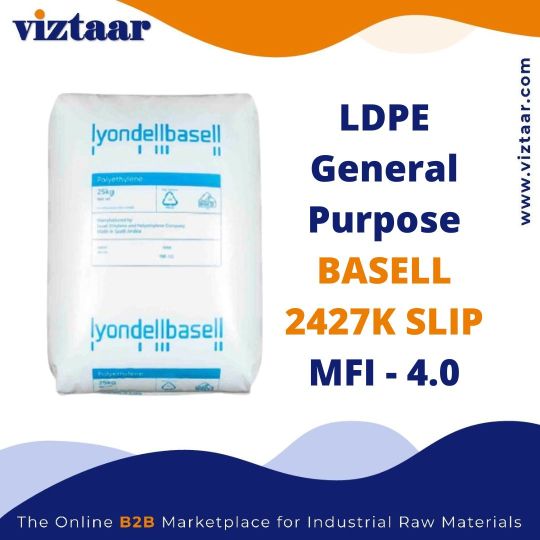
Unmatched Versatility: BASELL 2427K SLIP LDPE (4.0 MFI) at Viztaar
Viztaar Polymer Marketplace offers BASELL 2427K SLIP, a general-purpose LDPE grade with a Melt Flow Index (MFI) of 4.0. This MFI allows for excellent processing efficiency, making it ideal for high-volume production. BASELL 2427K SLIP shines with:
Adaptable Performance: Perfect for films, bags, liners, and molded parts across various industries.
Efficient Processing: The 4.0 MFI ensures smooth processing and faster production cycles.
Balanced Properties: Delivers a well-rounded combination of strength, tear resistance, and puncture resistance.
Applications: Packaging films, grocery bags, trash can liners, toys, and more!
Benefits of Buying from Viztaar:
Competitive Pricing
Secure B2B Platform
Streamlined Buying Process
#LDPE#generalpurposeplastic#versatilepolymer#packagingfilms#grocerybags#liners#moldedparts#highefficiencyprocessing#fastproduction#balancedproperties#tearresistant#punctureproof#ViztaarMarketplace#bulksupplier#plasticsolutions
0 notes
Text
A Printing Machine is an indispensable device used in industries such as publishing, advertising, and packaging to create copies of text and images using ink on paper. It comes in various sizes, ranging from small desktop units to large commercial models, and can employ different printing techniques such as offset, digital, or flexographic.
TYPES OF PLASTIC PRINTING MACHINE FOR SALE
Flexo Printing Machine
This printing machine, also known as an "aniline printing machine," is specifically designed for printing on various packaging materials such as plastic bags, cellophane, and web paper. It is widely used in food paper packaging, supermarket handbags, and clothing bags, making it an ideal choice for packaging needs.
Gravure Printing Machine
This unit is suitable for OPP, CPP, PE, PVC and other soft material film, paper, aluminum foil and other drum materials.
CHARACTERISTICS OF FLEXOGRAPHIC PRINTING MACHINES IN THE PACKAGING INDUSTRY
1. High printing speed: Flexographic printing machines are known for their high printing speed, allowing for mass production of packaging materials. This speed is achieved through the use of flexible rubber plates that can quickly transfer ink onto the substrate.
2. Versatility: Flexographic printing machines can print on a wide range of packaging materials including paper, plastic films, metal foils, and cartons. They are capable of producing various package types such as labels, corrugated boxes, flexible packaging, and shrink sleeves.
3. Cost-effective: Flexographic printing machines are cost-effective due to their ability to use water-based inks and plates made from rubber or polymer. These materials are relatively cheaper compared to other printing methods. Additionally, the quick setup and changeover times of flexographic printing machines contribute to cost savings and increased efficiency in the packaging industry.
FAQS OF PRINTING MACHINE
WHAT ARE THE ADVANTAGES OF USING A FLEXO PRINTING MACHINE?
Flexo Printing Machines offer advantages such as the ability to print on a wide range of substrates, high-speed printing capabilities, cost-effectiveness for medium to large print runs, and the ability to produce vibrant colors and sharp images.
WHAT ARE THE ADVANTAGES OF USING A GRAVURE PRINTING MACHINE?
Gravure Printing Machines provide advantages such as excellent print quality, the ability to print fine details and continuous tones, faster drying times, good ink transfer, and the ability to print on various substrates like plastic, paper, and metal. However, they are more suitable for large print runs due to setup costs.
WHAT ARE THE MAIN DIFFERENCES BETWEEN A FLEXO PRINTING MACHINE AND A GRAVURE PRINTING MACHINE?
The main differences lie in the printing plate and ink transfer methods. Flexo Printing uses flexible plates and a direct ink transfer from the plate to the substrate, while Gravure Printing uses engraved cylinders and an indirect ink transfer through a doctor blade. Flexo is better suited for short to medium print runs and provides more versatility in terms of substrates, while Gravure excels in long print runs and offers superior image reproduction and consistency.

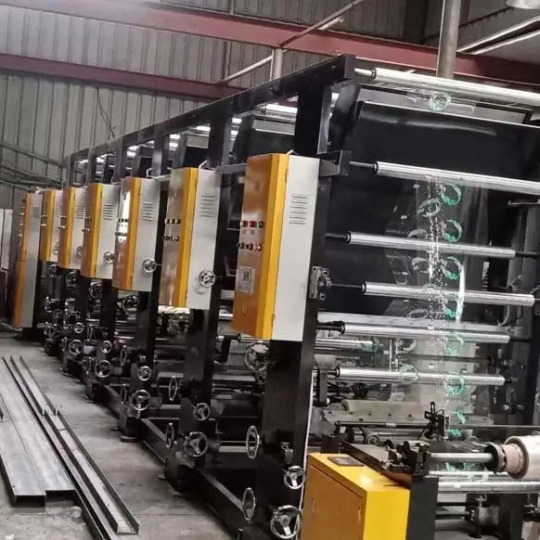
0 notes
Text
LDPE Gasket-Cap for Oral Dosage
As children grow up, their curiosity and desire to explore are unstoppable. One of the problems that worries parents is the accidental ingestion of medicines. In order to ensure the safety of children, the child resistant cap of oral preparations reduces the risk of children accidentally ingesting medicines by making it more difficult to open, giving parents more peace of mind. In the production…
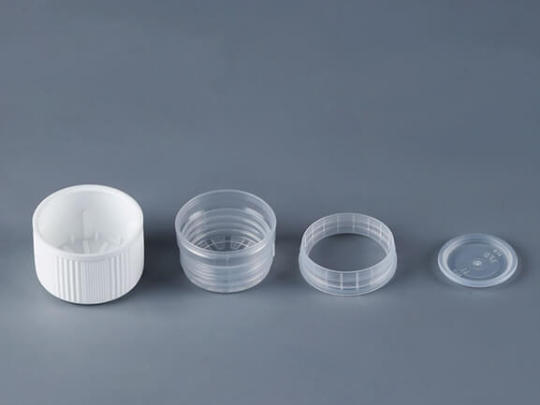
View On WordPress
0 notes
Photo
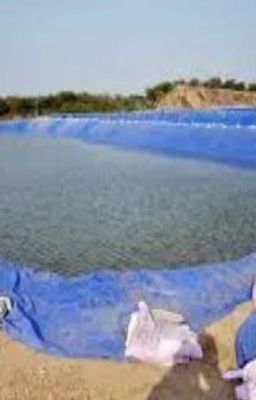
Best Price HDPE Sheets Manufacturer in India (on Wattpad) https://www.wattpad.com/1419743520-best-price-hdpe-sheets-manufacturer-in-india?utm_source=web&utm_medium=tumblr&utm_content=share_reading&wp_uname=monoindustries2 In the landscape of versatile materials, High-Density Polyethylene (HDPE) sheets stand as a testament to durability, flexibility, and environmental sustainability. This article unravels the myriad applications, benefits, and considerations that make HDPE sheets a staple in diverse industries.
#business#geomembrane#hdpe#hdpesheetsmanufacturer#india#ldpe#manufacturer#mono#monoindustries#sheet#sheets#sheetsmanufacturer#sheetssupplier#supplier#general-fiction#books#wattpad#amreading
0 notes
Text
Low Density Polyethylene (LDPE) Prices Trend | Pricing | Database | Index | News | Chart
Low Density Polyethylene (LDPE) prices have exhibited significant variability in recent years, driven by a confluence of factors affecting both supply and demand. As a thermoplastic polymer made from the monomer ethylene, LDPE is widely used in applications such as packaging, plastic bags, and containers due to its flexibility, chemical resistance, and ease of processing. The prices of LDPE are influenced by several key elements, including raw material costs, production capacity, demand trends, and geopolitical events.
The cost of raw materials, particularly ethylene, plays a crucial role in determining LDPE prices. Ethylene, derived from either natural gas or crude oil, is subject to the fluctuations of global energy markets. When the prices of oil and natural gas rise, the production costs of ethylene increase, subsequently driving up the cost of producing LDPE. Conversely, when energy prices fall, there is often a corresponding decrease in LDPE prices. This relationship underscores the interconnectedness of the plastics industry with the broader energy sector.
Production capacity also significantly impacts LDPE prices. The availability of production facilities and the capacity at which they operate can create supply constraints or surpluses in the market. For instance, if a major LDPE production plant undergoes maintenance or faces operational disruptions, the reduced supply can lead to price increases. On the other hand, the expansion of production facilities or the introduction of new plants can increase supply, potentially driving prices down. Market participants closely monitor announcements of new capacity additions or planned maintenance shutdowns to anticipate changes in LDPE prices.
Get Real Time Prices for Low Density Polyethylene (LDPE) : https://www.chemanalyst.com/Pricing-data/low-density-polyethylene-ldpe-24
Demand trends are another pivotal factor in the pricing dynamics of LDPE. The material's primary applications in packaging, agriculture, and consumer goods make its demand closely tied to economic conditions and consumer behavior. During periods of economic growth, the demand for packaged goods and consumer products typically rises, leading to increased demand for LDPE. This heightened demand can push prices upward. Conversely, economic downturns or shifts in consumer preferences, such as a move towards more sustainable packaging options, can reduce demand for LDPE and apply downward pressure on prices. Additionally, seasonal factors, such as increased agricultural activity in certain regions, can lead to temporary spikes in LDPE demand and prices.
Geopolitical events and trade policies also play a significant role in influencing LDPE prices. Tariffs, trade restrictions, and international relations can impact the flow of raw materials and finished products across borders. For example, trade tensions between major economies can lead to tariffs on ethylene or LDPE, increasing costs and disrupting supply chains. Political instability in regions rich in natural resources can also affect the availability of raw materials, further contributing to price volatility. Market participants must navigate these geopolitical complexities to manage price risks effectively.
Technological advancements and innovations in the production process can also influence LDPE prices. Improvements in manufacturing efficiency, recycling technologies, and alternative feedstocks can reduce production costs and potentially lower prices. For example, advancements in catalytic processes and the development of bio-based ethylene could provide more cost-effective and sustainable production pathways for LDPE. Companies investing in these technologies may achieve a competitive advantage by offering lower-priced or more environmentally friendly LDPE products.
Environmental regulations and sustainability initiatives are increasingly shaping the landscape of the LDPE market. Governments and regulatory bodies are imposing stricter environmental standards and promoting recycling and circular economy practices. These measures can affect both the supply and demand for LDPE. On the supply side, regulations may increase production costs through stricter emissions controls or mandates for recycled content. On the demand side, consumer preferences and corporate sustainability goals are driving a shift towards recycled or biodegradable alternatives. This shift can reduce the demand for virgin LDPE, influencing price trends.
In summary, LDPE prices are subject to a complex interplay of factors, including raw material costs, production capacity, demand trends, geopolitical events, technological advancements, and environmental regulations. Understanding these dynamics is essential for stakeholders in the plastics industry to navigate the market effectively. As the global landscape continues to evolve, the ability to anticipate and respond to changes in these factors will be crucial for managing LDPE price risks and leveraging opportunities. The continuous monitoring of energy markets, production developments, economic indicators, geopolitical events, and regulatory changes will provide valuable insights for making informed decisions in the ever-changing LDPE market.
Get Real Time Prices for Low Density Polyethylene (LDPE) : https://www.chemanalyst.com/Pricing-data/low-density-polyethylene-ldpe-24
Contact Us:
ChemAnalyst
GmbH - S-01, 2.floor, Subbelrather Straße,
15a Cologne, 50823, Germany
Call: +49-221-6505-8833
Email: [email protected]
Website: https://www.chemanalyst.com
#LDPE#LDPE Price#LDPE Price Monitor#LDPE Pricing#Low Density Polyethylene#Low Density Polyethylene Price#Low Density Polyethylene Prices
0 notes
Text
Rigid & Flexible Packaging - Oscar Products
Oscar Products Ltd is a UK-based company specializing in both rigid and flexible packaging solutions across various industries, including food, construction, agriculture, and more. With over 30 years of experience, they emphasize sustainable and innovative packaging options tailored to specific business needs.

Their product range encompasses retail packaging, flexible packaging, industrial protective covers, rigid packaging, and bulk bags. They are committed to delivering high-quality products and maintaining dependable partnerships.
While their website highlights their products and services, it does not provide specific information about job postings or career opportunities. For the most accurate and up-to-date information on employment opportunities at Oscar Products Ltd, it is advisable to contact them directly. You can reach them via phone at 01787 313840 or email at [email protected].
2 notes
·
View notes
Text
Polymer Granules Supplier India: Your Trusted Partner for Quality Polyethylene Materials
The demand for high-quality plastics and polymers in India is growing rapidly, and at the heart of this growth lies polymer granules—the raw materials used to manufacture everyday plastic products. Whether you're in the packaging, construction, agriculture, or automotive industries, sourcing the right polymer granules supplier in India can make a significant difference in product quality, cost, and performance.
In this blog post, we’ll help you understand everything you need to know about polymer granules, the types of polyethylene available (HDPE, LDPE, and LLDPE), and how to choose the best supplier in India.
What Are Polymer Granules?
Polymer granules are small, solid plastic particles made from synthetic resins. These granules are melted and molded into various plastic products. They serve as the primary raw material for plastic manufacturing across multiple industries.
Depending on your requirements, you can choose from different types of polyethylene granules like:
HDPE Polyethylene in India (High-Density Polyethylene)
LDPE Polyethylene in India (Low-Density Polyethylene)
LLDPE Polyethylene in India (Linear Low-Density Polyethylene)
Each type has unique properties, making it suitable for specific applications.
Types of Polyethylene Granules in India
1. HDPE Polyethylene in India
HDPE (High-Density Polyethylene) is known for its strength, stiffness, and durability. It is used for making:
Pipes and fittings
Bottles and containers
Chemical drums
Crates and bins
Advantages:
High tensile strength
Chemical and UV resistant
Excellent durability
Recyclable
Top HDPE polyethylene suppliers in India provide virgin as well as recycled HDPE granules in various grades suitable for blow molding, injection molding, and film applications.
2. LDPE Polyethylene in India
LDPE (Low-Density Polyethylene) is a softer and more flexible polymer. It’s ideal for manufacturing:
Grocery bags
Flexible lids
Shrink wraps
Cable insulation
Advantages:
Good impact resistance
Excellent moisture barrier
Flexible and lightweight
Cost-effective
LDPE polyethylene in India is widely used in packaging, electrical, and agricultural industries due to its lightweight and flexible nature.
3. LLDPE Polyethylene in India
LLDPE (Linear Low-Density Polyethylene) offers a balance of flexibility, strength, and puncture resistance. Common uses include:
Stretch film
Agricultural film
Liners and covers
Toys and flexible tubing
Advantages:
High impact strength
Excellent tear resistance
Versatile for molding and film production
Better toughness than LDPE
LLDPE polyethylene in India is gaining popularity for packaging and protective applications.
Why Choose a Reliable Polymer Granules Supplier in India?
Partnering with a trusted polymer granules supplier in India ensures consistent quality, timely delivery, and competitive pricing. Here’s why choosing the right supplier matters:
Quality Assurance
A good supplier ensures that granules like ISO, REACH, and ROHS meet international standards. Quality materials result in fewer defects and better end products.
Wide Range of Products
Top suppliers offer a variety of polymer grades—HDPE, LDPE, and LLDPE—for different manufacturing processes like blow molding, extrusion, and injection molding.
Pan-India Delivery
A well-established supplier should have a strong logistics network to deliver polymer granules across India efficiently.
Technical Support
Leading suppliers offer technical guidance to help clients select the right grade and optimize manufacturing performance.
Sustainability
Recycled polymer granules are often available to help businesses reduce their carbon footprint while maintaining quality.
Applications of Polymer Granules in India
Polymer granules are essential for several sectors, including:
Packaging: Flexible films, containers, shrink wraps
Automotive: Fuel tanks, bumpers, dashboards
Agriculture: Irrigation pipes, greenhouse films, mulch covers
Construction: Water tanks, insulation boards, fittings
Consumer Goods: Toys, storage boxes, homeware
Choosing the right polymer granules supplier in India means ensuring uninterrupted production, lower material waste, and high customer satisfaction.
Related FAQs: Polymer Granules Supplier India
Q1. What is the best type of polyethylene for packaging?
A: For flexible packaging, LLDPE and LDPE polyethylene in India are widely used due to their flexibility, transparency, and puncture resistance.
Q2. What’s the difference between HDPE and LDPE granules?
A: HDPE is stronger and more rigid, making it ideal for pipes and containers. LDPE is softer and more flexible, suitable for bags and films.
Q3. Can I buy recycled polymer granules in India?
A: Yes, many polymer granule suppliers in India offer recycled HDPE, LDPE, and LLDPE granules at cost-effective prices.
Q4. What certifications should a polymer granules supplier have?
A: Look for suppliers with ISO, REACH, ROHS, and BIS certifications to ensure product quality and compliance with safety standards.
Q5. Are polymer granules customizable for specific applications?
A: Yes, many suppliers provide customized grades and color masterbatches to suit specific industry requirements.
Q6. Where can I find polymer granule suppliers near me?
A: Most suppliers have pan-India logistics. You can easily connect with top polymer granules suppliers in India through B2B platforms or supplier directories.
Conclusion
Whether you're a manufacturer of plastic packaging, construction parts, or automotive components, selecting the right polymer granules supplier in India is critical for consistent production quality. Make sure your supplier offers a wide range of materials, including HDPE polyethylene in India, LDPE polyethylene in India, and LLDPE polyethylene in India, backed by quality certifications and prompt delivery.
Choose wisely; your manufacturing process will be more efficient, cost-effective, and sustainable. If you need help connecting with trusted polymer granule suppliers in India or want personalized recommendations based on your industry, feel free to contact our team.
1 note
·
View note